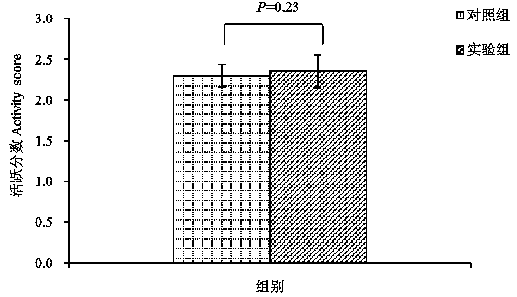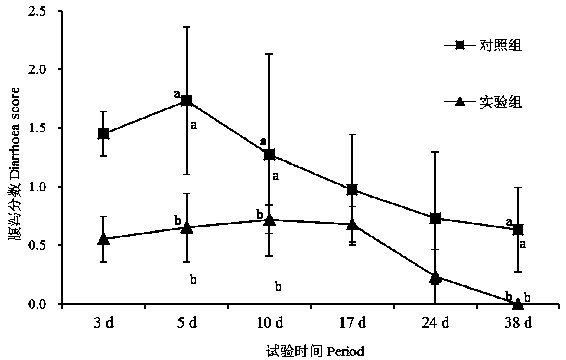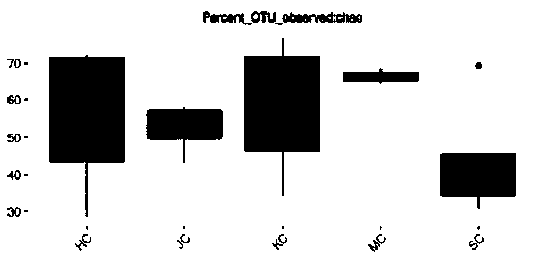Enterococcus faecalis and use method thereof
A technology of Enterococcus faecalis and intestinal mucosa, applied in the field of microorganisms, can solve the problem that the real effect of the product cannot be verified, and the production practice cannot play a great reference role. The probiotic properties of Enterococcus faecalis and Enterococcus faecalis have not been comprehensively obtained Systematically evaluate and other issues to achieve the effect of improving intestinal tissue morphology, improving relative abundance, and reducing relative abundance
- Summary
- Abstract
- Description
- Claims
- Application Information
AI Technical Summary
Problems solved by technology
Method used
Image
Examples
Embodiment 1
[0022] Embodiment 1, sample collection, strain isolation and screening
[0023] 1. Sample collection
[0024] The samples were collected from the intestinal mucosa of 60-day-old healthy pigs.
[0025] Collection time and location: Collected in a large-scale farm in Harbin in January 2016. After slaughtering pigs, the mucous membranes were scraped from the ileum, cecum and colon under aseptic conditions.
[0026] 2. Isolation of strains
[0027] Take 10 g of the sample, put it into a Erlenmeyer flask filled with 90 mL of sterile saline, and shake it fully for 20 min. The samples above were coated with CaCO 3 The GYP plate was cultured at 37°C for 48 h, and when the colonies grew out, the single colonies with the largest calcium-dissolving circle were selected and separated by streaking repeatedly until pure strains were obtained.
Embodiment 2
[0028] Embodiment two, molecular biological identification of Enterococcus faecalis
[0029] The genomic DNA of the target strain was extracted with a genome extraction kit (TianGEN BioTECH (BeiJing) Co. , Ltd.), using the extracted genomic DNA as a template, bacterial universal primers 27F (5′-AGAGTTTGATCCTGGCTCAG-3′) and 1492R (5′ -TACCTTGTTACGACTT-3′) was used as primers for PCR amplification to amplify the 16S rDNA fragment in the genomic DNA. Reaction system: 1 μL template, 10-fold diluted Taq DNA polymerase Buffer (containing Mg 2+ ) 2.5 μL, dNTP (2.5mmol / L) 1 μL, primer 27F and primer 1492R (10 μmol / L) each 0.5 μL, TaqDNA polymerase (5 U / μL) 0.125 μL (Bao Bioengineering (Dalian) Co., Ltd.) , make up to 25 μL. Reaction program: pre-denaturation at 95°C for 5 min; denaturation at 94°C for 1 min, annealing at 55°C for 1 min, extension at 72°C for 1.5 min, 30 cycles; extension at 72°C for 10 min. The amplified product was directly sequenced with primers 27F and 1492R (Be...
Embodiment 3
[0031] Example 3. Tolerance evaluation of Enterococcus faecalis WJ146 to artificial gastric juice and artificial intestinal juice
[0032] Artificial gastric juice: add 3 g / L pepsin to 0.85% sterile NaCl, adjust the pH to 2.0, 2.5 and 3.0 respectively.
[0033] Artificial intestinal fluid: Add 1 g / L of pancreatic enzymes to sterile isotonic solutions containing 0.3%, 0.5% and 1.0% bile salts (Bott and Wilson salts, 1.24% K 2 HPO 4 , 0.76% KH 2 PO 4 , 0.1% trisodium citrate, 0.6% (NH 4 ) 2 SO 4 ), adjust the pH to 8.0.
[0034]Control strain: Enterococcus faecalis CICC23215, purchased from China Industrial Microbiology Culture Collection Center (CICC).
[0035] Take a ring of freshly activated Enterococcus faecalis and insert it into the MRS liquid medium, and culture it statically for 24-48 hours at 37°C, and pass it once under the same conditions. Take 9 mL of the culture of Enterococcus faecalis that has been subcultured twice above, and centrifuge at 8000 rpm for 10...
PUM
 Login to View More
Login to View More Abstract
Description
Claims
Application Information
 Login to View More
Login to View More - R&D
- Intellectual Property
- Life Sciences
- Materials
- Tech Scout
- Unparalleled Data Quality
- Higher Quality Content
- 60% Fewer Hallucinations
Browse by: Latest US Patents, China's latest patents, Technical Efficacy Thesaurus, Application Domain, Technology Topic, Popular Technical Reports.
© 2025 PatSnap. All rights reserved.Legal|Privacy policy|Modern Slavery Act Transparency Statement|Sitemap|About US| Contact US: help@patsnap.com



